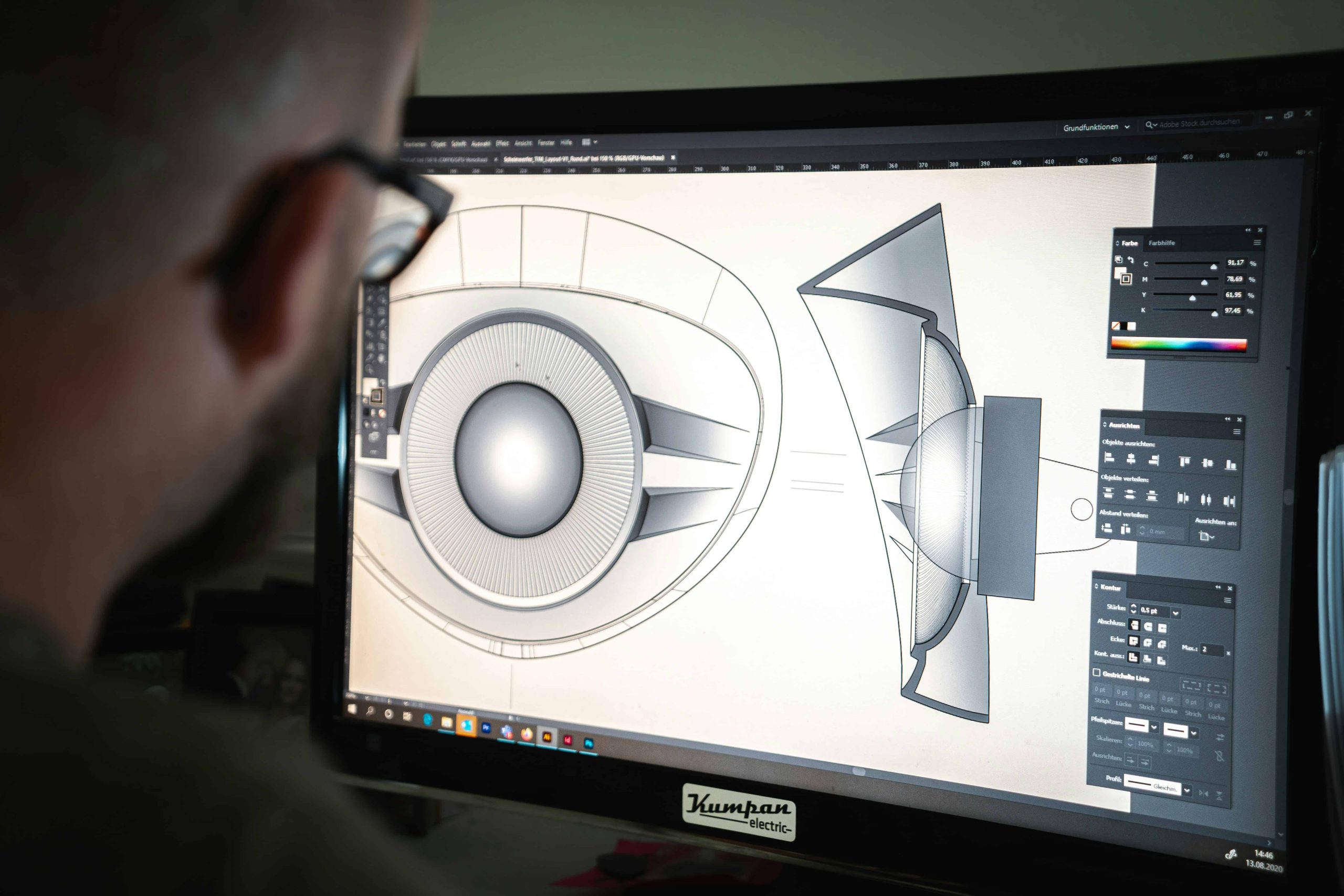
14 Feb Designing and Layout of Art Exhibitions
Art Exhibitions are lively cultural venues where artists tell their stories to a wide range of viewers. The success of an exhibition depends not only on the artworks themselves but also on the careful planning and organization of the space, which creates an impression on the observer. The interaction between art and place is essential because a well-designed exhibition design takes visitors through a carefully planned journey and goes beyond simple arrangement. A harmonic conversation between various artistic expressions is created by deliberate placement, thematic linkages, and spatial manipulation, all of which add to the overall impression. A successful exhibition combines the vision of the artist with the orchestrations of the curator to provide visitors with a deep and meaningful interaction with particular masterpieces as well as the larger cultural currents that influence the creative process.
Understanding the Exhibition and Audience
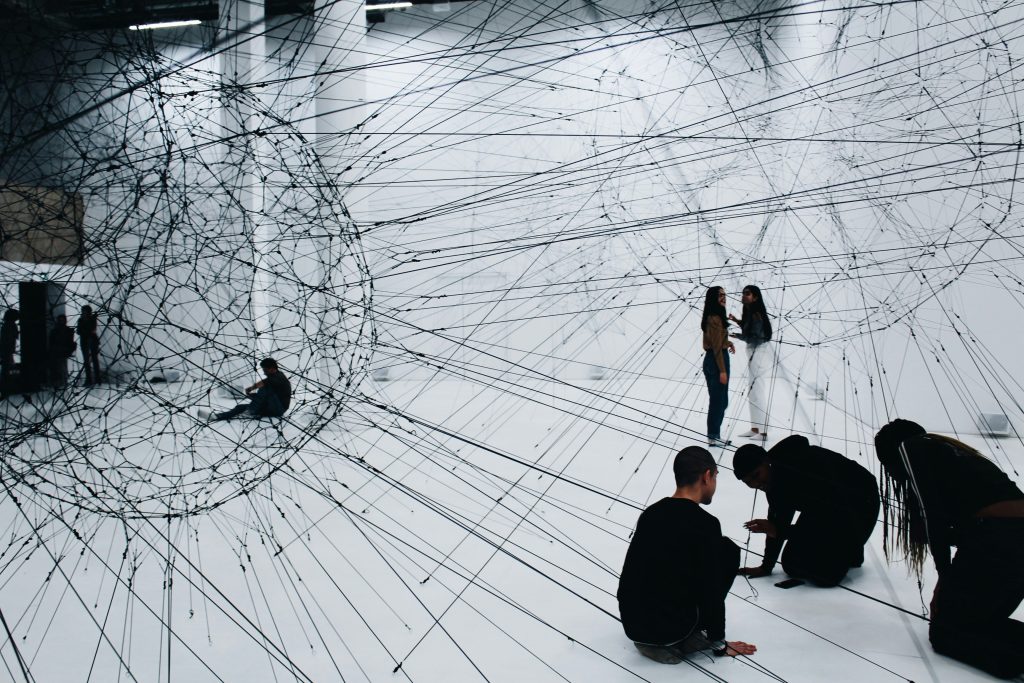
Photo by Alina Grubnyak
Exhibition Concept
Defining the exhibition’s concept marks the foundational step in the intricate process of curating a memorable and impactful showcase. This initial phase involves a meticulous examination of potential themes, artistic styles, or historical periods that might serve as the exhibition’s core. Whether the aim is to explore a specific artistic movement, showcase the works of a singular artist, or dive into a broader cultural or historical context, the clarity achieved in conceptualization sets the overarching tone for the entire exhibition. This conceptual framework acts as the guiding force, providing a narrative structure that not only organizes the artworks but also enhances the overall viewer experience. By weaving a coherent story or theme, the exhibition transforms into a cohesive entity, resonating with the audience on a deeper and more meaningful level. A well-defined concept becomes the thread that ties together diverse artworks into a harmonious and compelling visual narrative.
Target Audience
Understanding the audience is a pivotal consideration in the design and execution of an exhibition, as it greatly influences the success and impact of the showcase. Identifying the specific demographic or group of individuals the exhibition aims to engage with is crucial in tailoring the overall experience. Whether the target audience comprises families, seasoned art enthusiasts, scholars, or individuals with a particular interest, the exhibition’s layout and content should align with their preferences, interests, and accessibility needs. For family-oriented exhibitions, interactive and engaging displays might take precedence, while for art connoisseurs, a more scholarly and in-depth exploration of artistic techniques and concepts may be appropriate. By carefully considering the unique characteristics and expectations of the audience, designers can create an environment that not only captivates but also forges a stronger connection between the artworks and the viewers. This audience-centric approach ensures that the exhibition experience is not only enriching but also resonates with the diverse interests and backgrounds of those who engage with the showcased artworks.
Planning the Layout
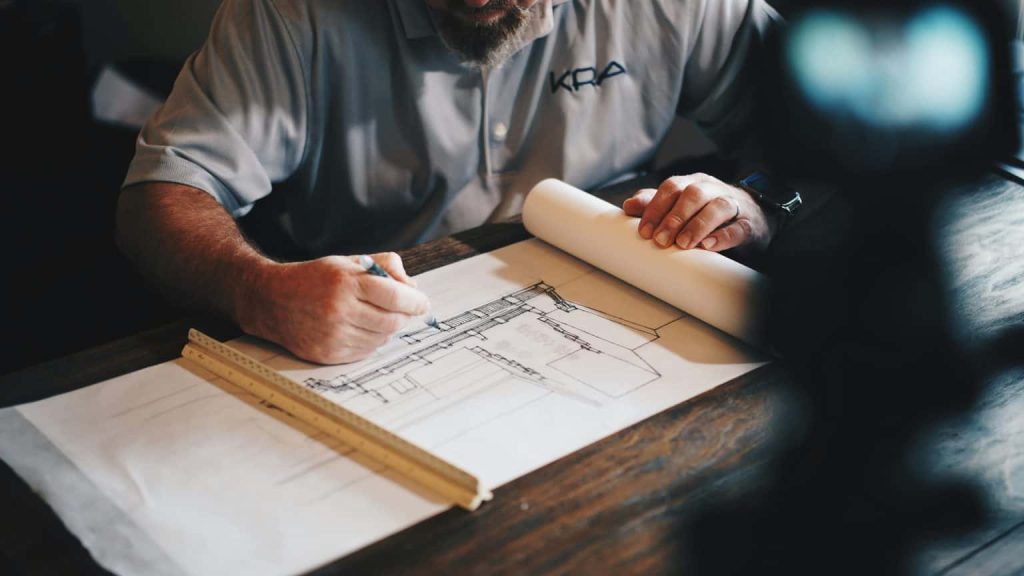
Photo by Daniel McCullough
Space and Flow
The physical layout of an exhibition space is a critical factor in shaping the overall visitor experience. Designers must strive to create a space that facilitates a natural and intuitive flow, guiding visitors seamlessly from one artwork to the next. Overcrowded walls and bottlenecks should be avoided to ensure that visitors can navigate the exhibition comfortably, promoting an enjoyable and immersive journey through the curated collection. Thoughtful spatial planning is key to achieving this, as it not only enhances the aesthetic appeal of the space but also contributes to the overall cohesiveness of the exhibition.
Grouping and Juxtaposition
The organization of artworks within the exhibition space plays a pivotal role in creating a dynamic and engaging experience. Grouping artworks thematically or chronologically, and employing juxtaposition, fosters a meaningful dialogue between the pieces. This deliberate arrangement prompts visitors to draw connections between artworks or appreciate the contrasts, thereby deepening their understanding of the artistic narrative. Through strategic placement, designers can guide the viewers on a curated visual journey, providing opportunities for reflection and contemplation as they navigate the exhibition space.
Wall Space and Light
The strategic use of wall space and lighting is crucial in maximizing the visual impact of the artworks on display. Designers must carefully consider the choice of wall colors and lighting to create an environment that complements and enhances the exhibited pieces. Thoughtful illumination not only highlights the details and nuances of each artwork but also contributes to the overall ambiance of the space. Additionally, considering the size and scale of the artworks in relation to the available wall space ensures an optimal viewing experience. By striking a balance between these elements, designers can achieve an aesthetically pleasing and harmonious exhibition layout, where each artwork is presented in the best possible light, both figuratively and literally.
Engaging the Senses
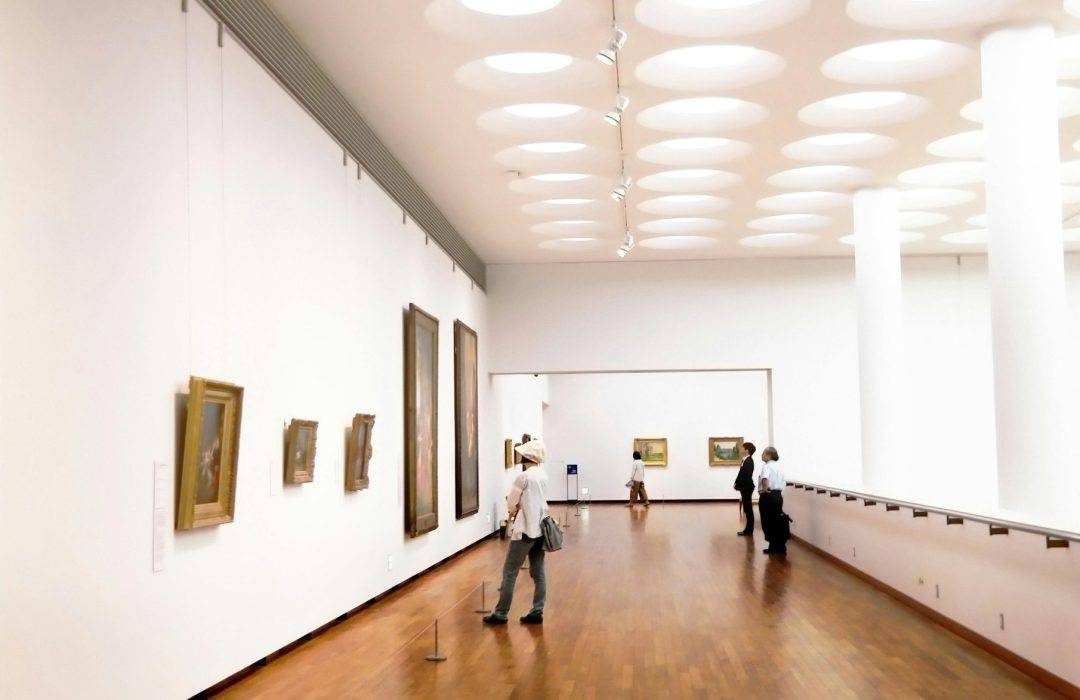
Visual Storytelling
When it comes to exhibition design, visual storytelling is an effective technique for strengthening the viewer’s bond with the artworks on view. Contextualizing the creative story through labels, text panels, or multimedia features, for example, becomes essential to improving the viewer’s comprehension of the work of art. These informative elements reveal the artist’s intention and creative process in addition to providing historical or thematic context. A unified and captivating setting is created within the exhibition, encouraging a better understanding of the included pieces by means of a narrative thread that unites each artwork. The level of visitor participation is further enhanced by interactive and participatory experiences, which transform the exhibition into a dynamic and immersive setting where people actively interact with and contribute to the tale as it unfolds.
Sensory Design
To create a truly enriching and memorable exhibition experience, designers are increasingly incorporating a multisensory approach. Beyond the visual aspects, engaging multiple senses such as sound, scent, or tactile features adds a layer of depth to the encounter. Considerations for sensory design aim to create a more holistic and immersive experience for visitors. For instance, incorporating ambient sounds that complement the artworks or introducing scents that evoke a specific mood can enhance the overall atmosphere of the exhibition. Tactile elements, such as touchable replicas or textures integrated into displays, provide a hands-on experience, appealing to the sense of touch. Accessibility considerations are paramount in this approach, ensuring that visitors with sensory impairments have equal opportunities to participate in and enjoy the exhibition. By embracing a sensory design philosophy, exhibitions can transcend traditional boundaries, offering a more inclusive and diverse experience that resonates with a broader audience.
Creating Atmosphere
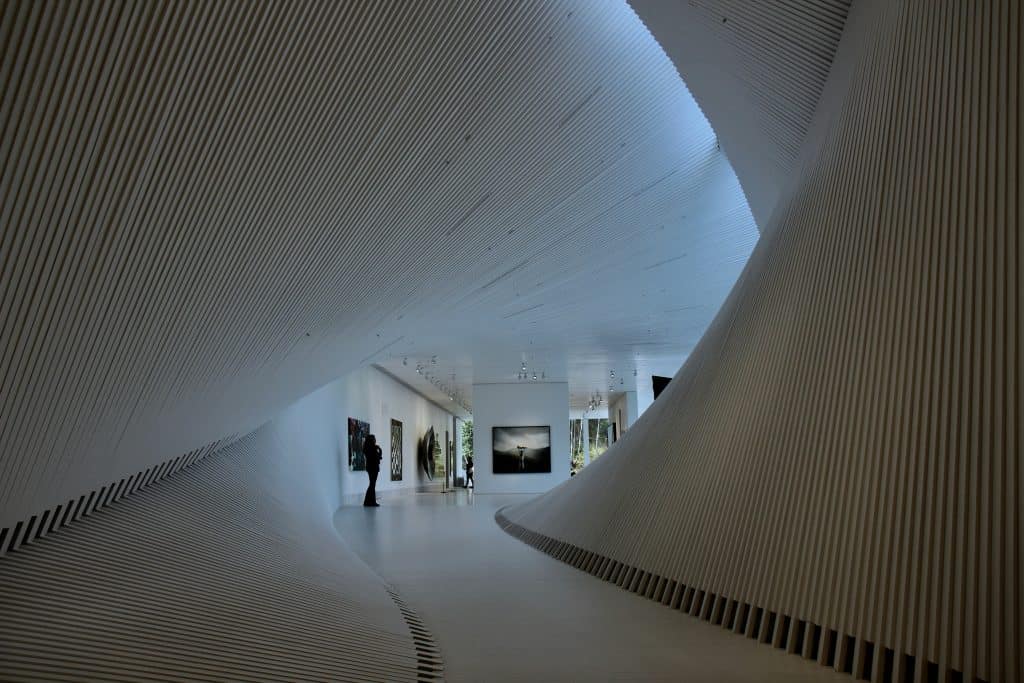
Photo by Arvid Høidahl
Theme and Mood
The creation of a captivating atmosphere within an exhibition is a nuanced process, heavily reliant on the careful orchestration of various design elements. Elements such as color schemes, textures, and even furniture choices contribute significantly to shaping the overall theme and mood. The intentional use of color can evoke specific emotions or reinforce thematic elements, while carefully selected textures and materials enhance the tactile experience for visitors. Furniture placement and design further contribute to the spatial narrative, providing functional elements that seamlessly integrate with the exhibition’s overall aesthetic. Temporary installations or purpose-built structures may also be employed to enhance the thematic experience, creating immersive environments that transport guests into the imagined worlds envisioned by the artists. Through these design choices, exhibitions become more than a mere collection of artworks—they evolve into curated environments that engage visitors on a sensory and emotional level, amplifying the impact of the showcased pieces.
Rest and Reflection
Acknowledging the importance of rest and contemplation within the exhibition experience, thoughtful design includes designated spaces for visitors to pause and reflect. Integrating comfortable seating areas and quiet zones ensures that guests can take a break, allowing them to absorb the artistic journey at their own pace. These spaces become havens for reflection, providing visitors with moments of respite amidst the visual stimulation of the artworks. The inclusion of seating not only caters to the physical comfort of visitors but also invites them to engage in a more contemplative exploration of the exhibited pieces. Such areas are carefully integrated into the overall design, seamlessly blending with the thematic elements of the exhibition while offering an opportunity for viewers to deepen their connection with the art. In providing these spaces for rest and reflection, exhibition designers acknowledge the diverse needs of their audience, fostering an environment where the appreciation of art is not only intellectual but also restorative and deeply personal.
Best Practices
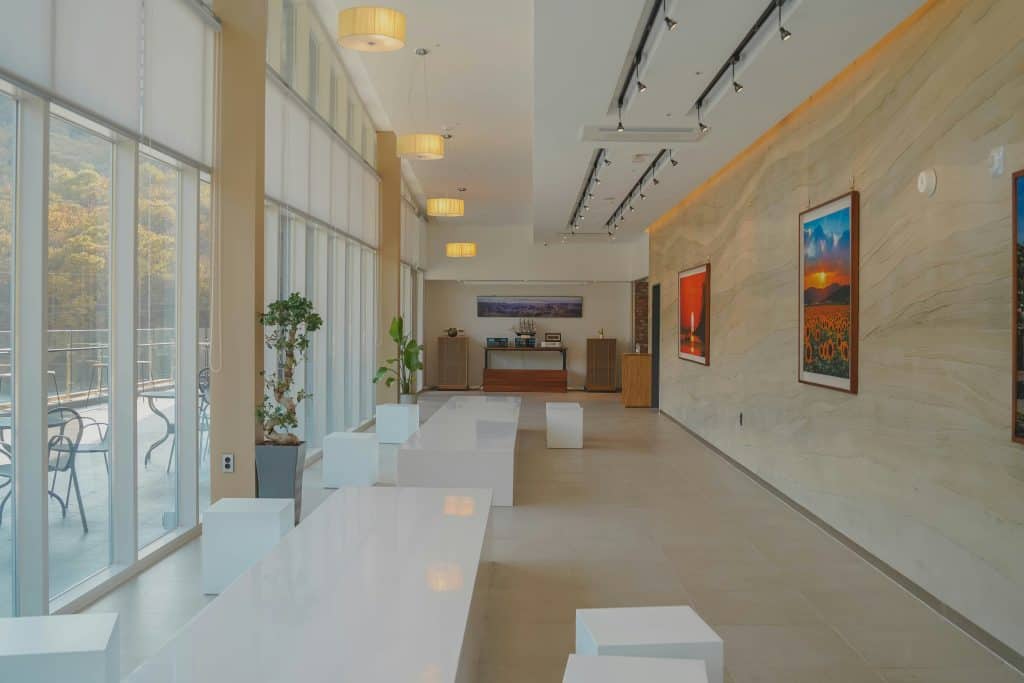
Photo by yeonhee
Accessibility
Prioritizing accessibility in exhibition design is a fundamental commitment to creating an inclusive environment that welcomes a diverse audience. Clear and well-placed signage, ramps for easy mobility, and accessible restrooms are essential elements that ensure the physical space accommodates individuals with varying needs. Additionally, incorporating audio descriptions, tactile models, and braille labels for artworks facilitates engagement for those with visual or auditory impairments. The thoughtful inclusion of these features transforms the exhibition into a space where everyone, regardless of their abilities, can fully participate in and appreciate the art on display. By prioritizing accessibility, exhibition designers contribute to the promotion of diversity and ensure that the transformative power of art is accessible to all.
Sustainability
Embracing sustainable practices in exhibition design reflects a commitment to environmental responsibility. Designers can contribute to reducing the ecological footprint of exhibitions by opting for recycled or reusable materials, minimizing waste, and implementing energy-efficient lighting and temperature control systems. By considering the lifecycle impact of design choices, from materials selection to disposal, exhibition designers play a crucial role in promoting sustainable practices within the cultural sector. Through these efforts, exhibitions not only showcase art but also serve as exemplars of responsible design, inspiring visitors to reflect on their own environmental impact.
Evaluation and Iteration
The exhibition design process doesn’t conclude with the opening day; it extends into the post-exhibition phase through continuous evaluation and iteration. Gathering feedback from visitors provides valuable insights into their experiences and preferences. By listening to audience responses, designers can make informed adjustments to improve the overall exhibition experience. This iterative approach fosters a continuous cycle of improvement and innovation, ensuring that each exhibition becomes a learning opportunity. The feedback loop not only enhances the current exhibition but also informs the design of future showcases, allowing designers to refine their strategies and better cater to the evolving needs and expectations of their audience. In embracing this evaluative mindset, exhibition designers contribute to the ongoing evolution of the cultural landscape, creating experiences that resonate more deeply with their visitors.

Photo by Startup Stock Photos
Conclusion
When it comes to creating an engaging and immersive experience for visitors, deliberate design and layout are crucial components in the world of art exhibits. This guide delves into the complexities of designing an exhibition, stressing the significance of a well defined idea, customized viewer experiences, and a fluid spatial flow. The goal of the design process is to create a dynamic conversation that enhances the visitor’s comprehension of the artistic narrative through various means such as thematic grouping of artworks and strategic use of wall space and lighting.
Engaging the senses through visual storytelling, sensory design, and creating a curated atmosphere further elevates the exhibition experience. Best practices, such as prioritizing accessibility and sustainability, underscore the commitment to inclusivity and environmental responsibility. Clear signage, ramps, and accessible facilities ensure a diverse audience can fully engage, while sustainable practices contribute to minimizing the ecological footprint. In essence, the intersection of artistic expression and intentional design transforms exhibitions into transformative and inclusive spaces for all.
Key Takeaways
Conceptual Clarity: Exhibitions should begin with a clear conceptualization, whether based on themes, artists’ styles, or historical periods, to resonate with the audience and create a cohesive narrative.
Audience-Centric Design: Understanding the audience’s preferences and accessibility needs is vital. Tailoring the exhibition layout to cater to diverse demographics enhances engagement and connection with the artworks.
Spatial Planning and Organization: Thoughtful layout planning ensures a seamless flow through the exhibition space, preventing overcrowding and facilitating an immersive journey. Grouping artworks thematically or chronologically and optimizing wall space and lighting contribute to a harmonious layout.
Multisensory Engagement: Enriching the exhibition experience involves engaging multiple senses. Incorporating visual storytelling elements, interactive features, and sensory design enhances immersion and accessibility for all visitors.
Creating an Immersive Atmosphere: Curating the exhibition’s atmosphere through design elements such as color, texture, and thematic installations enhances the overall experience. Providing restful spaces for contemplation allows visitors to engage with the artworks at their own pace. Additionally, prioritizing accessibility, sustainability, and continual evaluation ensures inclusivity, environmental responsibility, and ongoing improvement in future exhibitions.
FAQs
Why is the exhibition concept crucial to design?
The exhibition concept holds pivotal significance in design as it serves as the cornerstone upon which the entire visitor experience is built. It delineates the theme, narrative, or message intended to be conveyed, thereby establishing the overarching framework that guides the design process. By defining the tone and direction of the exhibition, the concept ensures cohesiveness and resonance throughout, thereby enhancing its overall impact and effectiveness in engaging audiences.
How can designers engage the senses in an exhibition?
Designers possess a myriad of tools and techniques to engage the senses within an exhibition space, thereby creating a rich and immersive experience for visitors. Visual storytelling through labels and multimedia channels serves as a primary means to captivate the eyes and stimulate the imagination. Moreover, the incorporation of soundscapes, scent diffusions, and tactile elements further enriches the sensory landscape, offering visitors a multisensory journey that deepens their connection with the exhibited content.
Why is accessibility important in exhibition design?
Accessibility stands as a paramount consideration in exhibition design, underscoring the importance of ensuring that the space and its contents are accessible to all individuals, regardless of their physical or cognitive abilities. By implementing features such as clear signage, ramps, and accommodations for various impairments, designers foster an inclusive environment wherein diverse audiences can fully engage with the artwork, thereby promoting equity and accessibility within the cultural sphere.
What role does sustainability play in exhibition design?
Sustainability emerges as an increasingly integral aspect of exhibition design, reflecting a broader commitment to environmental stewardship and responsible resource utilization within the art world. By prioritizing the use of recycled or reusable materials and implementing energy-efficient practices in lighting and temperature control, designers can mitigate the ecological footprint of exhibitions while championing sustainable principles and practices.
How can designers gather feedback for exhibition improvement?
To achieve ongoing improvements, designers depend on reliable feedback systems to extract viewpoints and insights from visitors, which allows for iterative improvement and improvement of the exhibition experience. Designers can identify areas for optimization and gain valuable insights into the effectiveness of different design elements through various means, including surveys, visitor comments, and observational analysis of visitor behavior. This fosters a culture of innovation and responsiveness within the practice of exhibition design.
Discover the cutting-edge field of “Virtual Reality in Art Exhibitions” and its transformative potential for producing immersive digital art experiences where the lines between the real and virtual worlds blur and audiences are invited to experience engaging, creative, and exploratory journeys unlike anything they have ever experienced.

